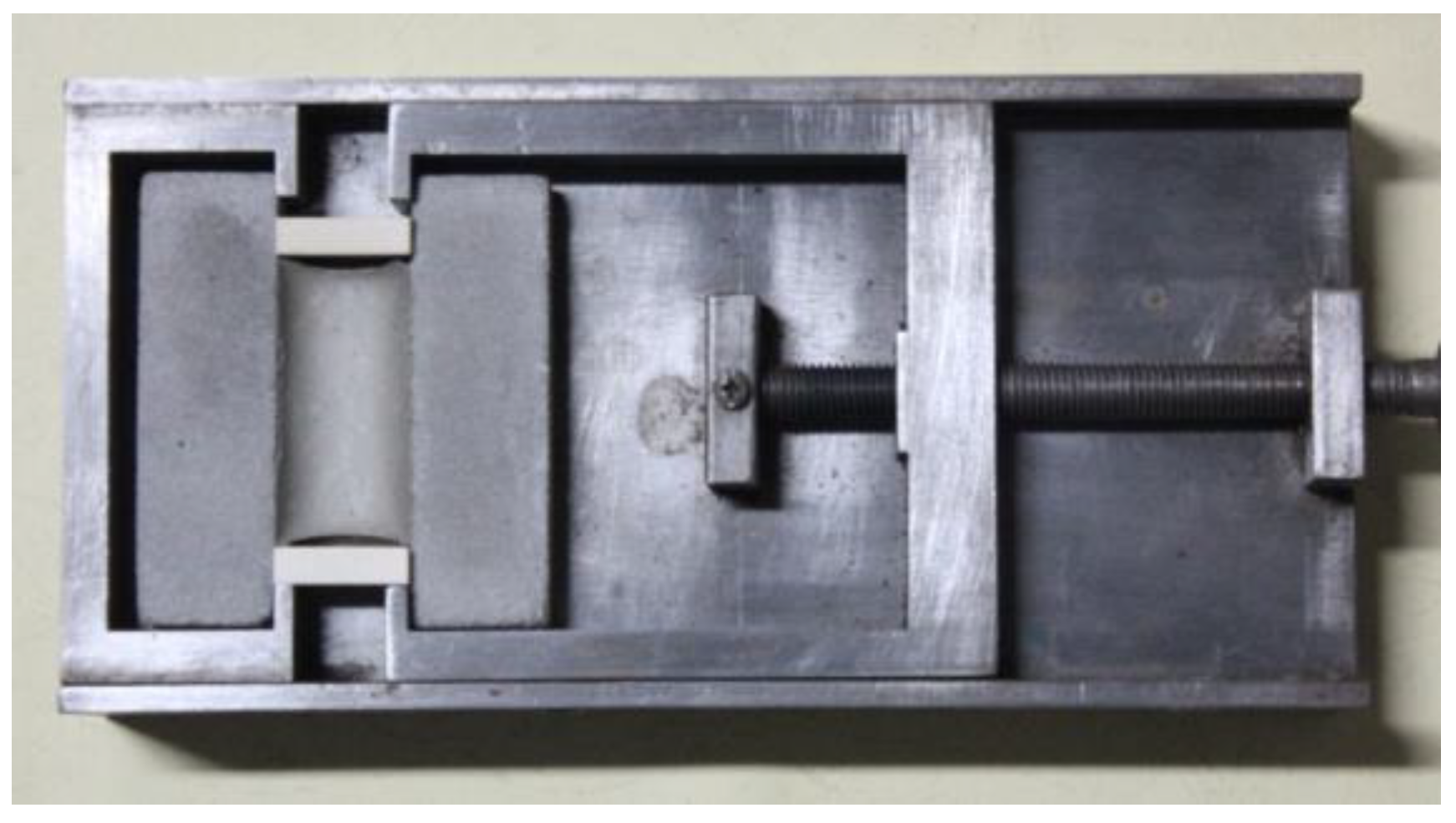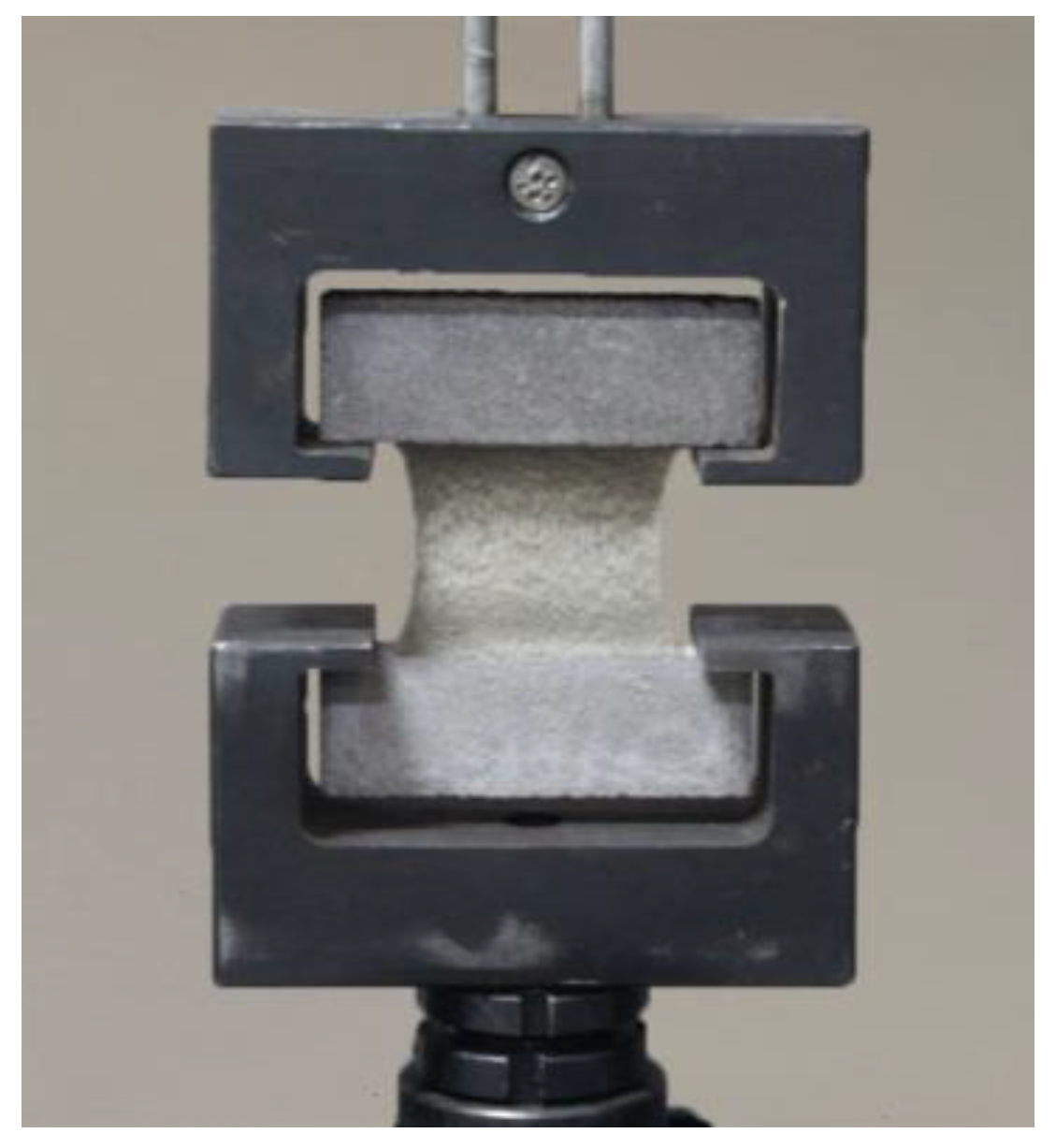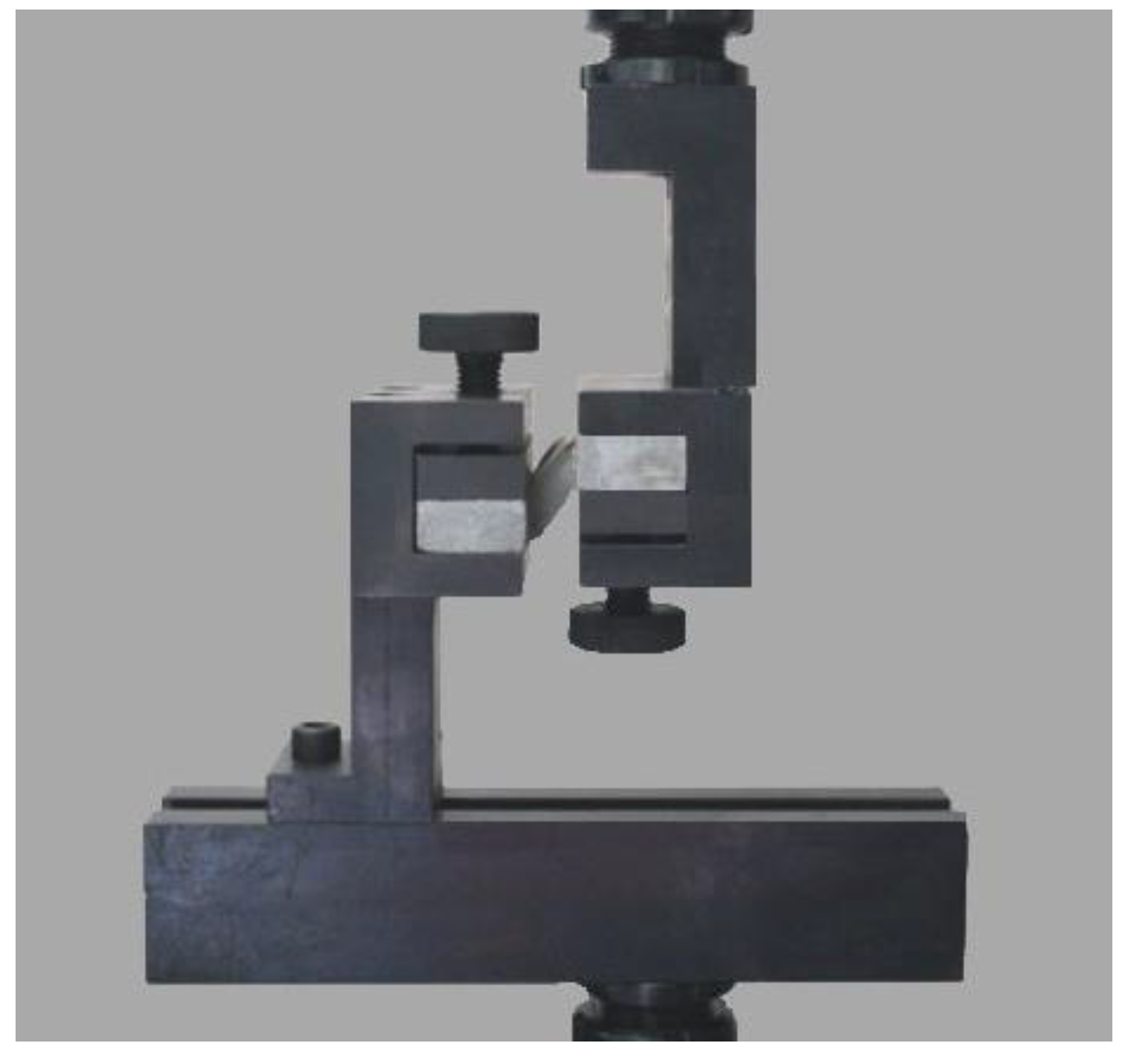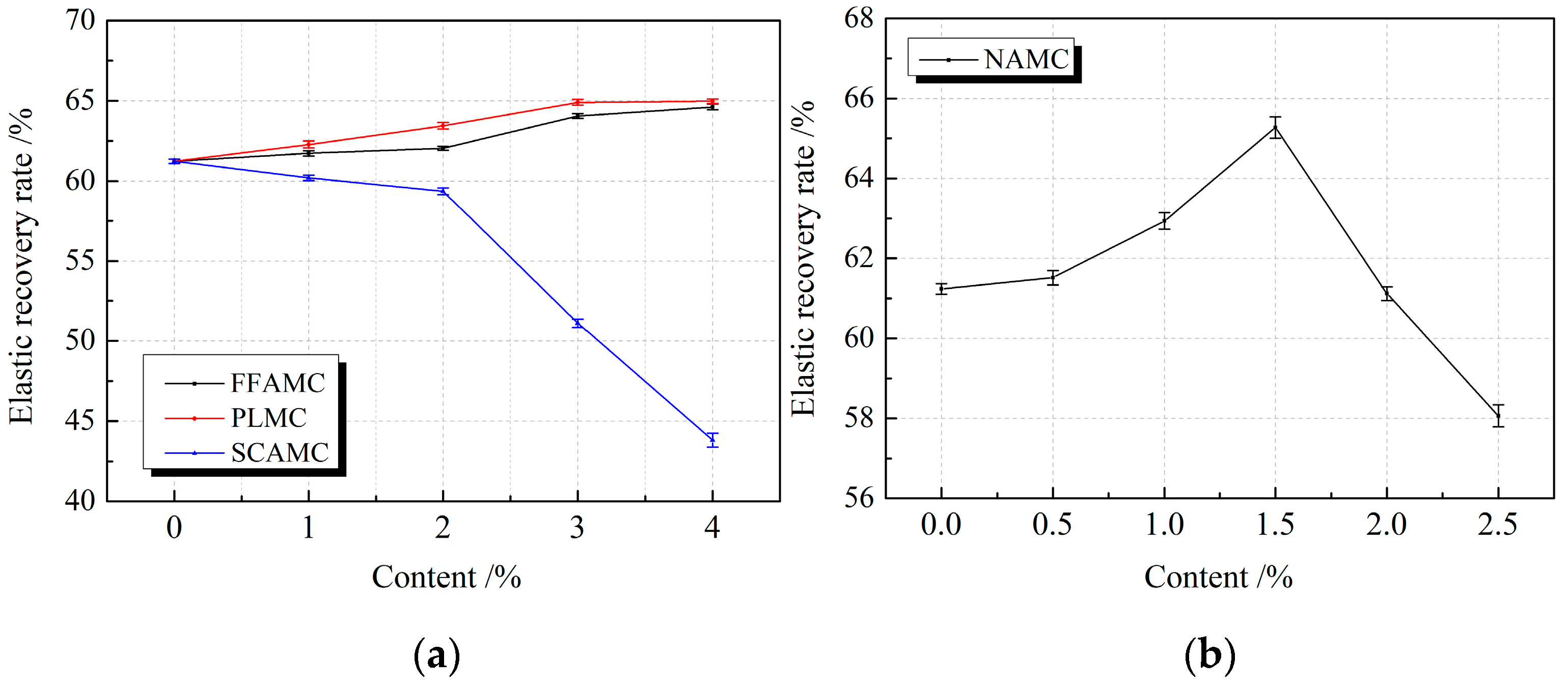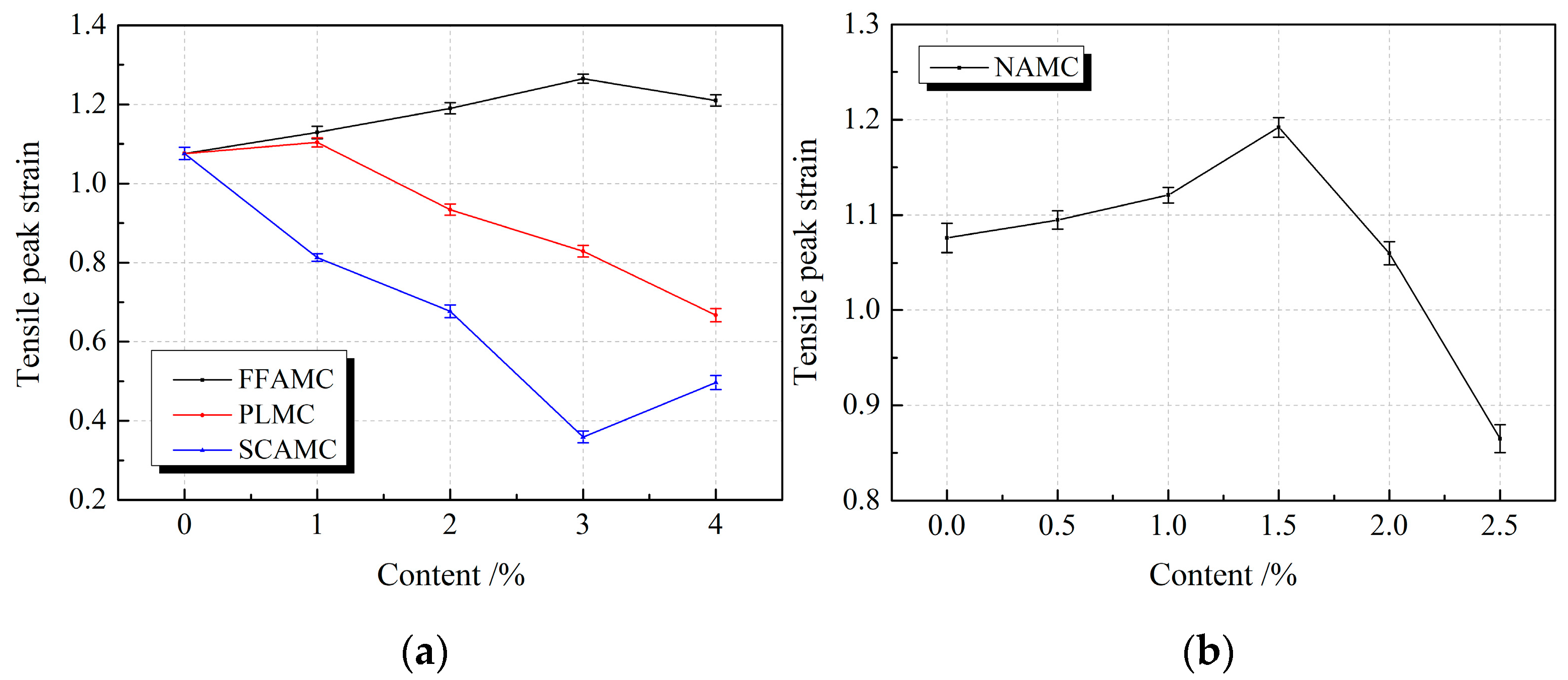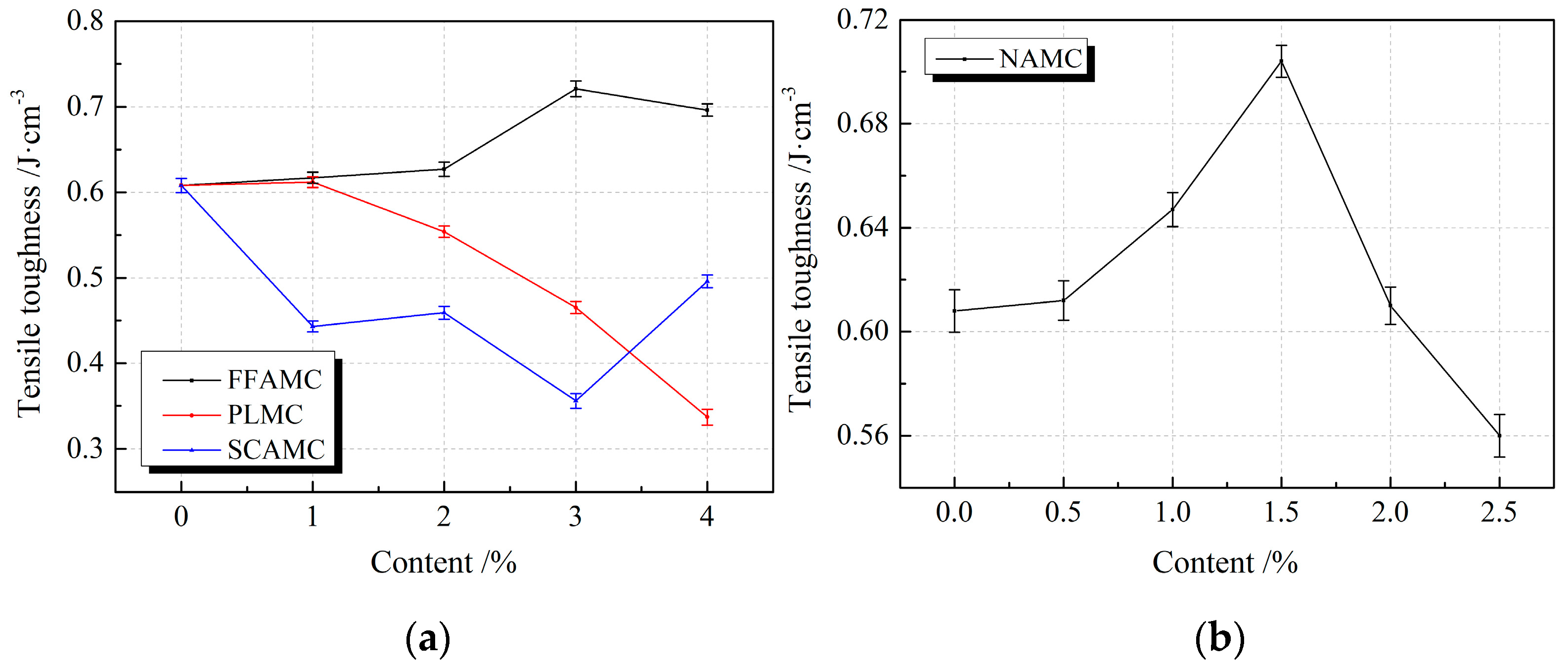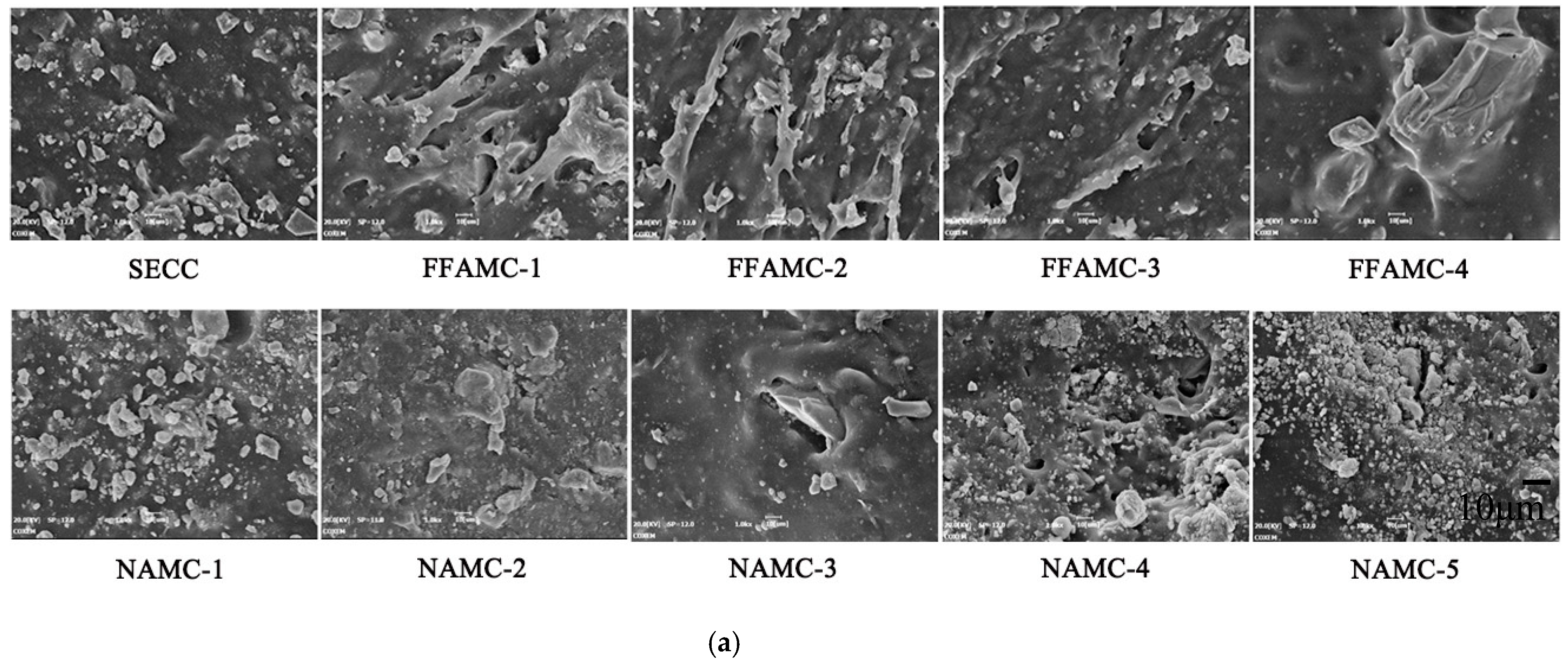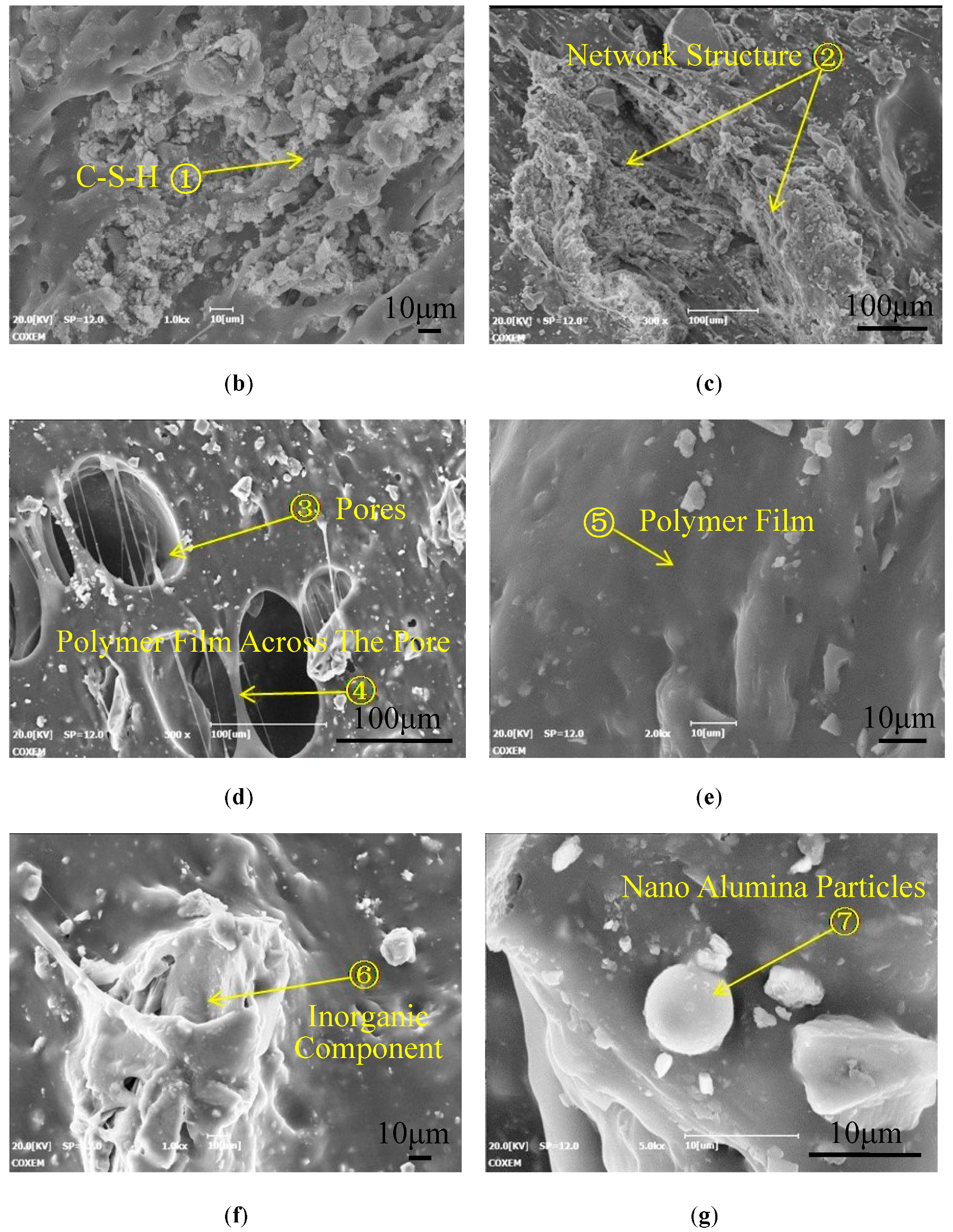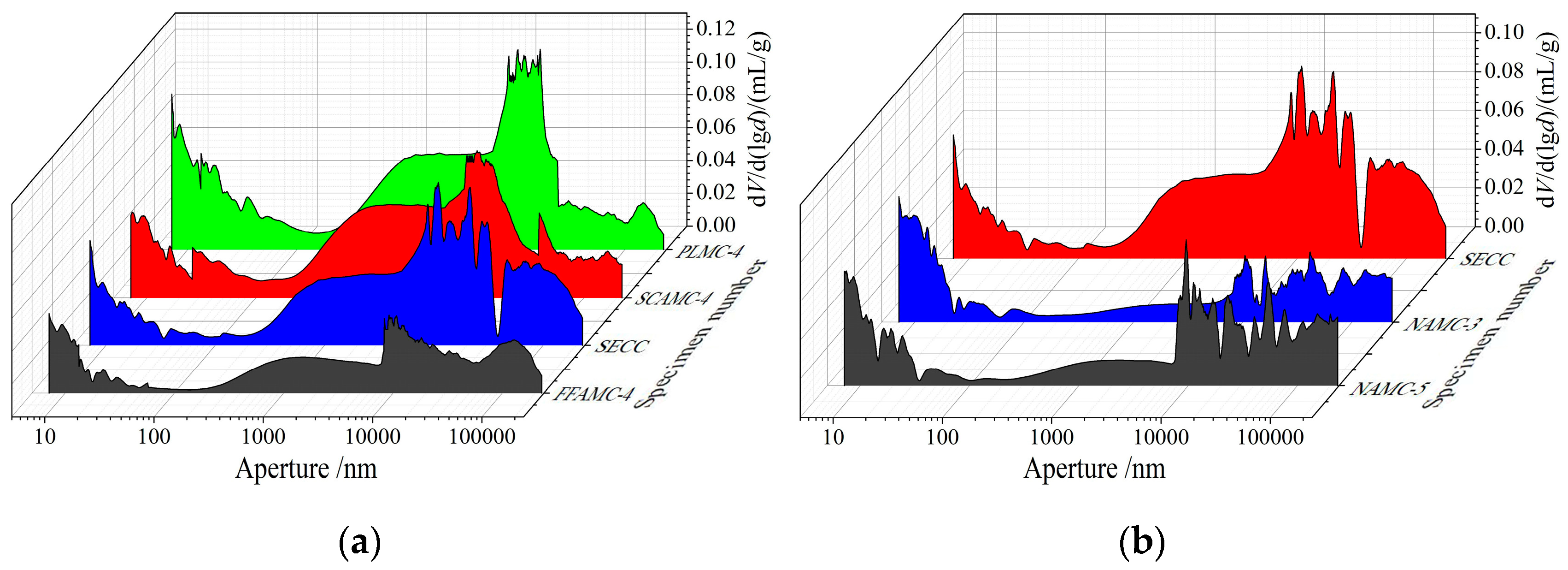4.1. Microstructure
Coalescing agent and nanometer aluminium oxide had better improving effects on the mechanical properties of the SECC material test specimens. Therefore, this study took FFAMC and NAMC test specimens as the examples to observe the microstructures of FFAMC and NAMC test specimens, and to analyze the microscopic mechanisms of coalescing agent and nanometer aluminium oxide in modifying the SECC test specimens. The microstructures of FFAMC and NAMC test specimens were shown in
Figure 14. It was shown in
Figure 14a that, after adding coalescing agent, the organic polymer film formed inside the test specimen cross-linked with the cement hydration product; besides, a higher addition amount of coalescing agent resulted in the most obvious cross-linking effect; when coalescing agent was not added, and C-S-H was scattered onto the polymer film (refer to SECC). When the coalescing agent addition amount was increased from 0% to 2%, the microstructure of test specimen gradually translated into the cross-linking between C-S-H and the polymer film, and the cross-linking degree was aggravating; at the addition amount of 3%, it developed into the structural morphology of little scattered C-S-H and the approximately integral transition interface; when the addition amount was increased to 4%, it formed the continuous and integral structural morphology with no obvious transition interface (refer to FFAMC-4). Further, it was observed based on
Figure 14b–d that, the coalescing agent promoted the polymer film formation, with the increase in its addition amount, on the one hand, the organic polymer film inside the test specimen kept on cross-linking with C-S-H, which gradually formed the continuous and integral transition interface. On the other hand, the polymer film crosses the pore to form the continuous and tight spatial network structure. The polymer film possessed good property in bonding and elasticity, the continuous and integral transition interface enhanced the test specimen strength, the tight spatial network structure boosted the deformation capacities of test specimens under tensile and shear loads, and the external energy was absorbed and translated into the own deformation energy, thus improving the energy consumption property. Consequently, coalescing markedly improved the bond properties, tensile properties, and shear performances of the SECC test specimens, and the FFAMC test specimen achieved the optimal comprehensive mechanical properties at its addition amount of 4%.
It was shown in
Figure 14a that, when the nanometer aluminium oxide addition amount was 0.5%, the microstructure of NAMC test specimen showed no obvious change compared with that of SECC test specimen; at the addition amount of 1%, the scattered inorganic powders and C-S-H were reduced; when the addition amount was increased to 1.5%, the scattered inorganic powders and C-S-H were further reduced, an a continuous and smooth structure was formed, as shown by NAMC-3. However, with the further increase in nanometer aluminium oxide addition amount, the nanometer aluminium oxide particles hardly dispersed evenly in the composite material, and nanometer aluminium oxide particle enrichment and aggregation phenomena began to appear, as shown by NAMC-4 and NAMC-5. Further, based on
Figure 14e–g, the nanometer aluminium oxide particles had strong absorption capacity and high catalytic activity, when incorporated into SECC, the large amount of calcium hydroxide harmful crystals in the cement hydration products were adsorbed onto the nanometer aluminium oxide surface, which were reacted and consumed to produce the hydrated calcium aluminate; at the same time, the nanometer aluminium oxide particles bonded more nanometer hydration products based on the original cement hardened pastes to develop secondary hydration reaction, thus forming the smooth and continuous film structure, which reduced the enrichment and oriented arrangement of calcium hydroxide harmful crystals, increased the content of hydration product C-S-H on the transition interface, and thereby improved the interface properties of composite materials. Therefore, the bond property, tensile property, and shear performances of the test specimens were improved. Meanwhile, the nanometer aluminium oxide particle enrichment and aggregation phenomena were observed when the nanometer aluminium oxide addition amount was 1.5%, the polymer film was wrapped or absorbed onto the film surface, which prevented it from sufficient reaction, leading to the formation of the weak region in the test specimen. Consequently, the mechanical properties of test specimens were reduced, and the optimal nanometer aluminium oxide addition amount was 1.5%.
4.2. Pore Structure Analysis
Table 7 shows the pore structural parameters of the SECC test specimens modified by different admixtures measured through mercury injection test,
Figure 15 presents the effects of different modification manners on the pore distribution differential curve of the composite materials, and
Figure 16 illustrates the effects of different modification manners on the pore volumes and percentages of test specimens. Clearly, after coalescing agent was added, the pore volumes and average pore sizes of test specimens were apparently reduced; compared with SECC test specimen, those in FFAMC-4 test specimen were reduced by 49.2% and 40.5%, respectively, the maximum aperture was markedly reduced, the aperture distribution was not obviously changed, and the large aperture percentage was slightly decreased. The possible reasons were that, on the one hand, the coalescing agent cross-linked polymer film molecules with inorganic powders through the chemical bond, which improved the interface bond properties of the two and improved the test specimen compactness; on the other hand, the inorganic powder surface had higher dispersity after the cross-linking with coalescing agent, which reduced the bubble-produced pores introduced due to uneven dispersion. After adding plasticizer, the percentages of medium aperture and large aperture in the test specimens were apparently reduced, the aperture distribution shifted to the reduction direction, but the average aperture and pore volume were evidently increased. Compared with the SECC test specimen, the average aperture and pore volume of PLMC-4 test specimen were increased by 27.2% and 38.3%, respectively. After adding silane coupling agent, the maximum apertures of test specimens were not markedly changed, while the medium aperture was apparently reduced, the aperture direction shifted to the reduction direction, the large pore percentage was decreased, the transition pore and capillary pore percentages were slightly improved. However, the pore volume and average aperture were markedly enhanced, compared with the SECC test specimen, those of SCAMC-4 test specimen were increased by 28.1% and 22.9%, respectively. Thus, it was clear that, plasticizer and silane coupling agent improved the aperture distribution of composite material test specimens, reduced the number of large pore, substantially increased the pore volume and pore size, therefore, their respective addition amounts must be controlled within the reasonable ranges. The major causes of this phenomenon was that, plasticizer and silane coupling agent weakened the intermolecular force between the polymer chains and softened the polymer emulsion particles, respectively, when they were added into the composite material, they promoted the plastic flow of polymer particles, allowed for the sufficient contact between emulsion particles and inorganic powders, and accelerated the film formation, thus improving the aperture distribution of the test specimen. However, when large amounts of plasticizer and silane coupling agent were added, they remarkably weakened or softened the polymer emulsion particles, which increased the intermolecular gap; besides, the plasticizer and silane coupling agent gradually evaporated in the test specimen after they exerted their action, leading to the apparently increased pore volume and average aperture of the test specimen.
After adding nanometer aluminium oxide, the pore volume of NAMC test specimen was remarkably reduced compared with that of SECC test specimen, the characteristic aperture was markedly reduced, the aperture distribution kept on shifting towards the decrease direction, the large pore percentage was apparently reduced, and the gel pore and transition pore percentages were improved. At the nanometer aluminium oxide addition amount of 1.5%, the test specimen had the optimal pore structure, with the pore volume of 0.0716 mL/g, the average pore size of 35.17 nm, the large pore percentage of 57.68%, which were reduced by 48.89%, 65.90%, and 21.43%, respectively, compared with the SECC test specimen. When the nanometer aluminium oxide addition amount was increased to 2.5%, the pore volume, characteristic aperture and large pore percentage of NAMC-5 test specimen were slightly increased relative to those of NAMC-3 test specimen, but obviously decreased compared with those of SECC test specimen. Thus, it was obvious that the addition of appropriate amount of nanometer aluminium oxide effectively reduced the pore volume of test specimen, refined the aperture size, improve aperture distribution, and thus enhanced the test specimen compactness. Nonetheless, excessive nanometer aluminium oxide reduced the modification effect, which was ascribed to the surface effect of nanometer aluminium oxide particles. To be specific, nanometer particle has great specific surface area and high surface energy, which is able to tightly adsorb the inorganic powders and polymer emulsion particles, and to develop chemical bonding with the cement hydration products to form the compact network structure, thus enhancing the test specimen compactness. Moreover, a large amount of water is required for the surface wetting and depolymerization of nanometer particle, which further decreases the pore produced due to water evaporation. However, excessive nanometer aluminium oxide particles adsorb and aggregate together, leading to the increased pores within the test specimen.
To sum up, the addition of coalescing agent, plasticizer, silane coupling agent and nanometer aluminium oxide refined the pores in the SECCs, among which, coalescing agent and nanometer aluminium oxide had the best modification effects, which refined the pore structure, reduced the porosity, increased the compactness of composite material, and thus markedly enhanced the comprehensive mechanical properties of test specimen.

